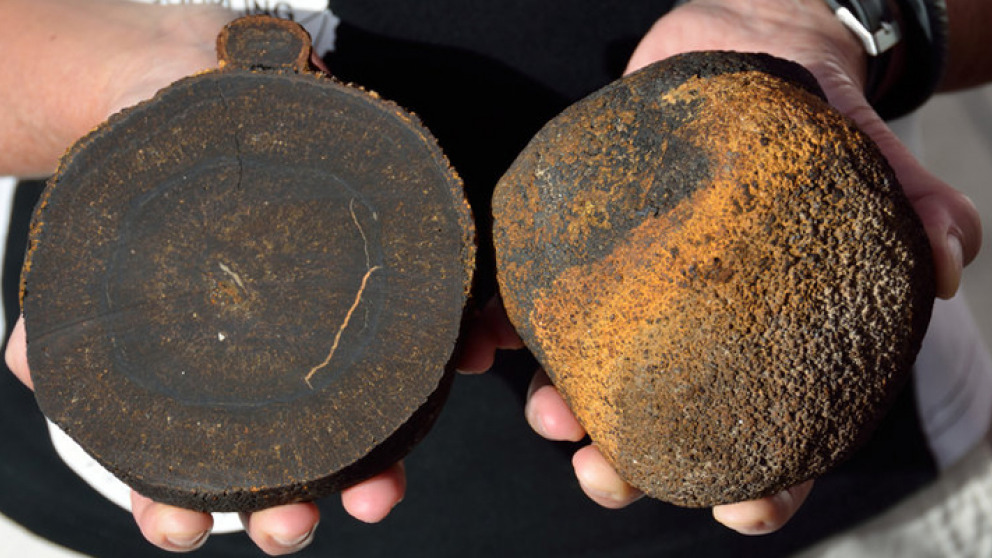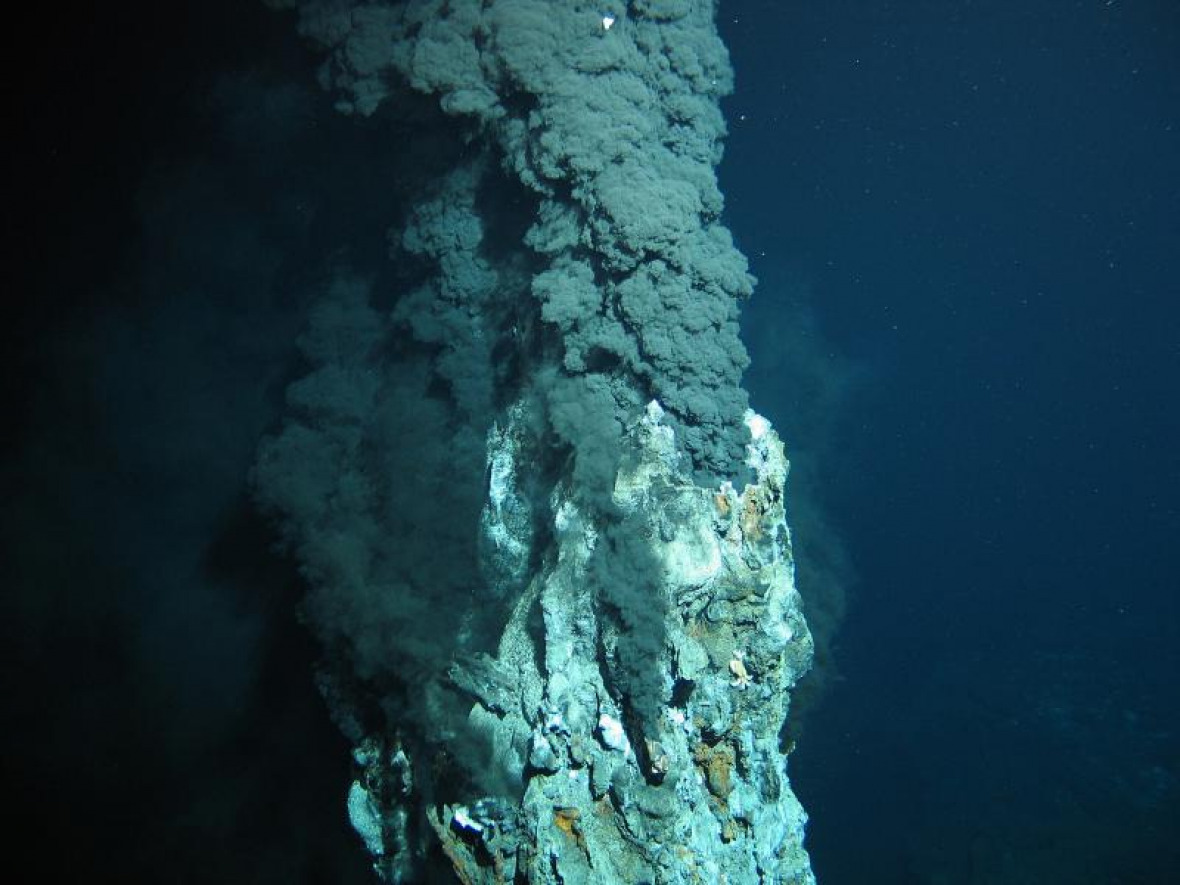Headline:
Deep-sea Mining: Possible but is it Permissible?

How does one go about setting limits for industries and activities? Existing limits are currently being overstepped in many spheres of activity I could mention: the extraction of raw materials from the thawing Arctic, the production of shale gas, the potential use of methane hydrates, and the mining of ore from the deep sea.
In considerations of how we can organise such activities in the most sustainable way possible, we need to strike a balance between their economic, social and ecological consequences. In practice, there tends to be a slippery slope to exploitation; environmental risks are seen as mere obstacles that can be overcome by technology and adaptation strategies. Why is it that there are no public, forward-looking procedures to clarify whether these new industries are desirable, relevant to society, and acceptable from an environmental point of view before they are introduced – and before substantial funding is granted for further research? Various laws and global agreements do in fact stipulate that human usage should be evaluated on the basis of the ecosystem approach, which implies that non-sustainable activities will not be permitted. But as always, these documents leave lots of room for interpretation...
Business interests in the raw materials of the deep sea
In the case of deep-sea mining it would be very important to take a forward-looking approach and set priorities in the context of the discussion on sustainability. Because what’s at stake is nothing less than the question of whether we continue as normal (we all use minable new resources in some way or other to feed our consumer habits) or take meaningful steps towards bringing our consumption down to a level and a quality that can be sustained by recycling, reducing (minimising the amount of materials used and using them more efficiently), and substituting (replacing harmful materials with less harmful ones).
The desire to mine (or at least stake a claim on) minerals in the deep sea, preferably beyond the grasp of national legislation and claims, is driven by a few myths (check out the blog post by my colleague Jeff Ardron) as well as more concrete interests. For example, the interest of industrial states in securing access to raw materials for their industries and tapping into new markets for high-tech offshore technologies. And the fact that everybody who’s involved has a say, for example in the negotiations of the International Seabed Authority, is not inconsequential. It’s only in recent years that the private sector has entered this arena.
UN Law of the Sea protects marine flora and fauna
They have to contend with environmental protection requirements. The universally valid Law of the Sea (UNCLOS) obligates all state parties to protect and preserve the marine environment (article 192) and to prevent, reduce and control pollution of the marine environment from any source. It also compels states to take measures necessary to protect and preserve rare or fragile ecosystems as well as the habitat of depleted, threatened or endangered species and other forms of marine life (article 194.5). With regard to the consequences of deep-sea mining in areas beyond national jurisdiction, it is stated that measures must be taken to ensure the “prevention, reduction and control [...] of interference with the ecological balance of the marine environment, paying particular attention [...] to the need for protection from harmful effects of such activities as drilling, dredging, excavation, disposal of waste, construction and operation or maintenance of installations, pipelines and other devices related to such activities” and to ensure the “protection and conservation of the natural resources of the Area and the prevention of damage to the flora and fauna of the marine environment” (article 145[1]).
In Europe, we have a further contractual commitment to improve the environment and achieve a healthy marine ecosystem as well as, at least until now, a policy that is intended to foster the development of a circular economy.
Deep-sea mining: the facts
The ‘deep sea’ refers to the parts of the oceans beyond continental shelves, which are usually deeper than 200 metres. A water column as high as 10 000 metres covers the seabed, a landscape of plains, hills and the occasional towering volcano. This landscape is divided by the mid-ocean ridge and bounded by the continental shelves, island arcs and deep-sea trenches. Primary production ceases below 200 metres, and below 1 000 metres it’s always dark and cold. The fauna of the deep-sea is adapted to a meagre and sparse food supply; it reproduces irregularly and is generally long-lived but very sensitive to any changes in the deep-sea environment. Only species found around hydrothermal vents thrive, thanks to the symbionts that allow them to use the metallic and sulphurous water for growth.
What environmental problems does deep-sea mining bring?
There are three types of deposit, each of which is found in a different ecosystem at a different depth and requires different mining technologies.
- Seafloor massive sulphide (sms) deposits are found at active or solidified hydrothermal vents, for example along the mid-ocean ridge (1 500–5 000 m deep). In slow-spreading zones like the Atlantic some hydrothermal fields exist for hundreds of thousands of years; as a consequence, the deposits there are thick – and the species communities unique. A first mining project is due to start in Papua New Guinea in 2017. Since it takes a few years to mine the deposits on a single hydrothermal field, several fields must be mined for the venture to be profitable. The technology for extracting and processing these deposits already exists, but it still has to be tested.

- Polymetallic (manganese) nodules are found on the seabed of sub-tropical oceans (4 000–6 000 m deep) – sometimes in large quantities. Per unit area, deep-sea habitats are more diverse than tropical rainforest and they are not used to disturbances. Areas that are exploited have no chance of recovery. Thirty-six years after a dredge left a single furrow on the seabed, the physical, chemical and biological features have still not been restored (see the photo below). A single deep-sea mining project would turn 200 km2 of the ocean floor into desert each year for at least 20 years. In the process, it would stir up large quantities of fine deep-sea sediment, which disperses slowly over a wide area – to the detriment of the fauna that live there. So actually, an area of at least 10 000 km2 would be ‘consumed’ in just 20 years. Technologies for collecting and mining manganese nodules are currently being developed – in Germany and other countries – but as yet no techniques exist for extracting the various metals contained in the nodules.
- Polymetallic crusts are deposits formed over millions of years (5 mm maximum in 1 million years) on exposed rock on the flanks of submarine mountains (800–2 500 m) These flanks are particularly important in ecological terms as a habitat for corals and sponges as well as shoal-forming deep-sea fish. And that explains why many of these areas have already been destroyed by deep-sea fishing. It has been shown that these habitats have not been recolonised, even decades later. As yet, there is no effective technique for separating the crusts from the rock.
So in principle, we should have a different approach for each of the three deposits, but there are similarities between all of the methods described:
The mining of raw materials is per se not sustainable. Everything that we consume today will no longer be available to future generations;
- The last untouched ecosystems are in the process of being (partially) destroyed, with incalculable consequences for the local food web;
- The ecosystems in question are particularly sensitive and are therefore protected under different international and regional agreements and national legislations (European Union!);
- Our knowledge of deep-sea habitats – from species numbers and distribution to the interconnections between seabed and water habitats – is so limited that it’s impossible to carry out a risk assessment on the necessary spatial and temporal scales – and this is not likely to change in future;
- Since deep-sea mining takes place under the surface of the ocean, the consequences of these activities will not be immediately visible or palpable. This could lead people to underestimate the environmental damage caused;
- Deep-sea mining will put further pressure on oceans that are already adversely affected by land-based pollution, waste disposal, shipping, fishing, offshore production of oil and gas and, increasingly, by aquacultures and wind energy installations.
The Earth’s last untouched ecosystems are now due to be put to use for our benefit. Do we really want that? And do we know what we’re doing? What will we say to our children and grandchildren when there’s nothing left of the wonders of nature and the raw materials that we currently use as though there was no tomorrow?
Would it not be better to put all our energies and resources into improving the state of the oceans – as urged by all global and regional agreements – by reducing the pressure we exert on the marine environment through our activities instead of raising it with unforeseeable consequences?
Is the effort required to mine the deep sea worth it for us as the common owners of the ocean’s resources? Or will it only be a few (firms) that profit from this venture? It is estimated that in Europe deep-sea mining will lead to the creation of just 500 jobs.
Will we ultimately lose far more than we gain?
Further reading:
Gelpke, N., Visbeck, M.H. (2014). Rohstoffe aus dem Meer – Chancen und Risiken. world ocean review - Mit den Meeren leben 3, Maribus, pp. 1–168.
Bergbau in der Tiefsee. Grenzland für Forschung, Technologie und Naturschutz. WWF Deutschland Hintergrunddokument. 7 pp. http://www.wwf.de/fileadmin/fm-wwf/Publikationen-PDF/WWF-Hintergrundpapier-Tiefseebergbau.pdf
WGBU (2013). Welt im Wandel. Menschheitserbe Meer. Wissenschaftlicher Beirat der Bundesregierung Globale Umweltveränderungen, pp. 1–28 (Zusammenfassung). http://www.wbgu.de/fileadmin/templates/dateien/veroeffentlichungen/hauptgutachten/hg2013/wbgu_hg2013_kurz_dt.pdf
Header image: These manganese nodules, now discovered during expedition SO237 in the Atlantic, are up to 10 million years old. Photo: Thomas Walter
[1] https://www.admin.ch/opc/de/classified-compilation/20040579/index.html
